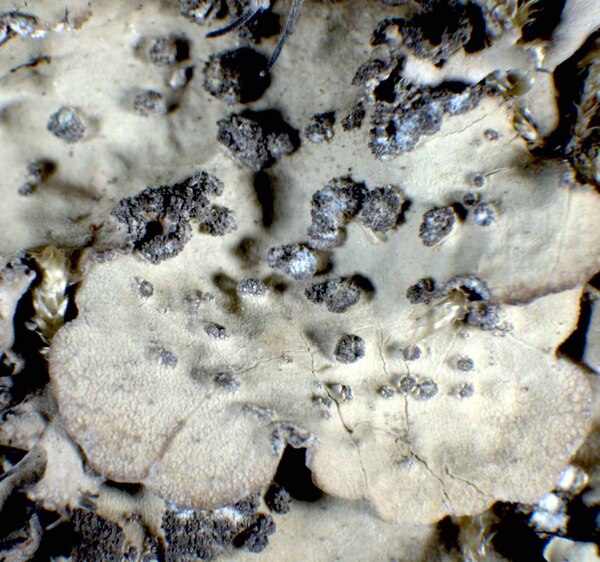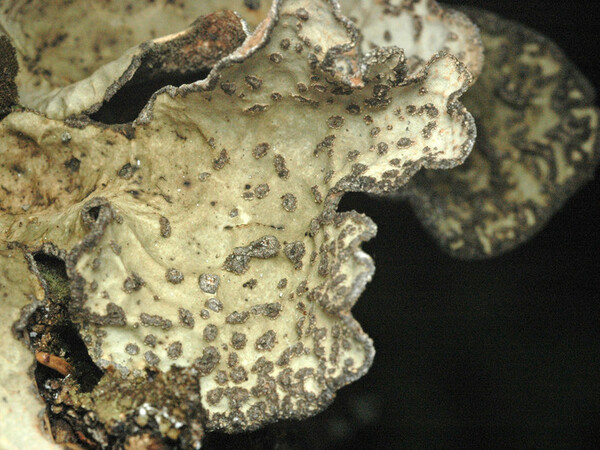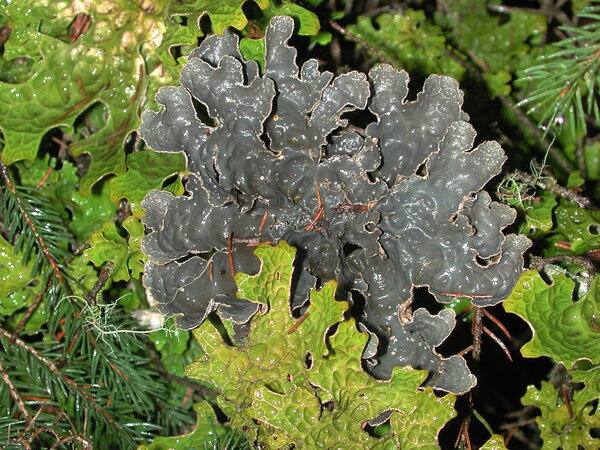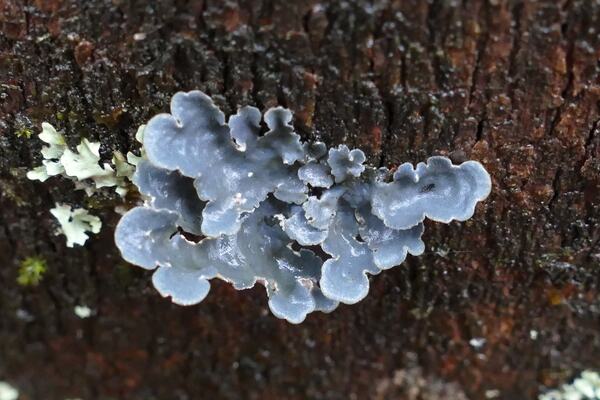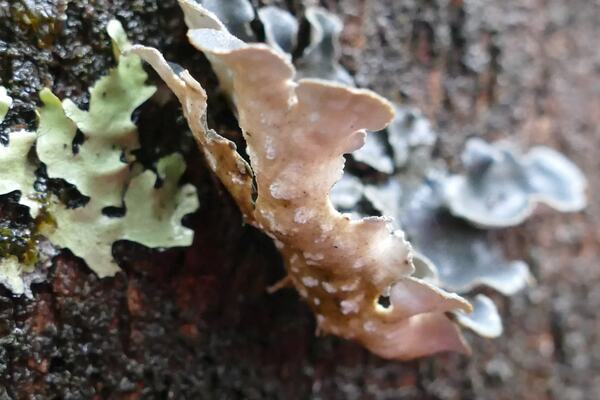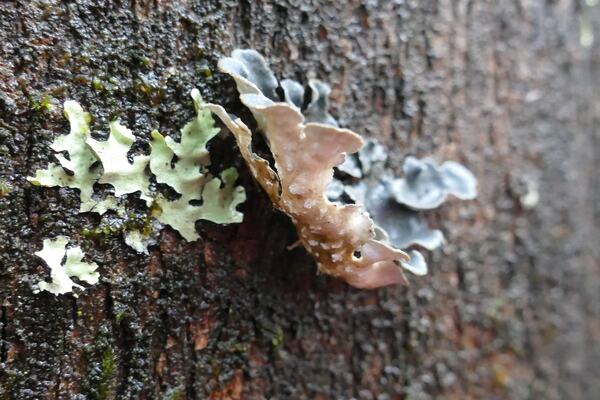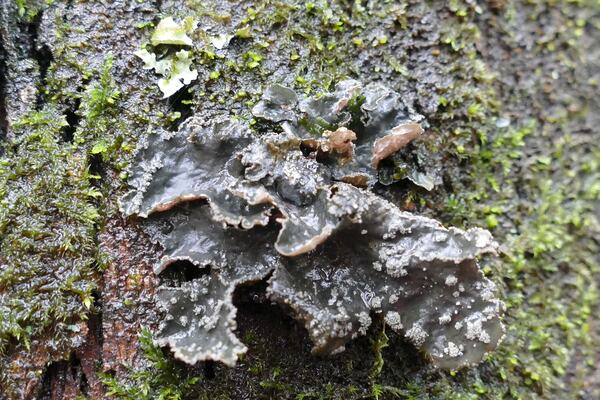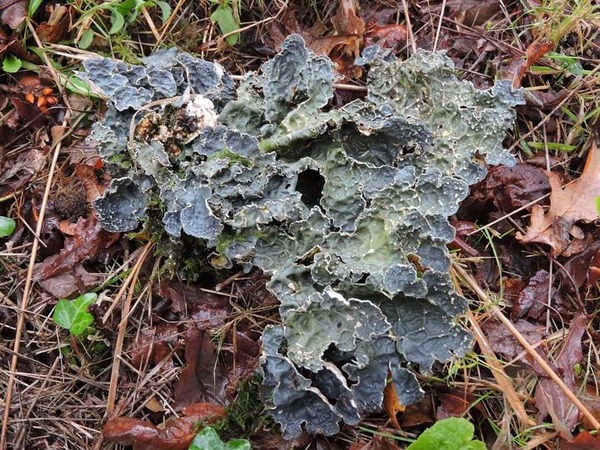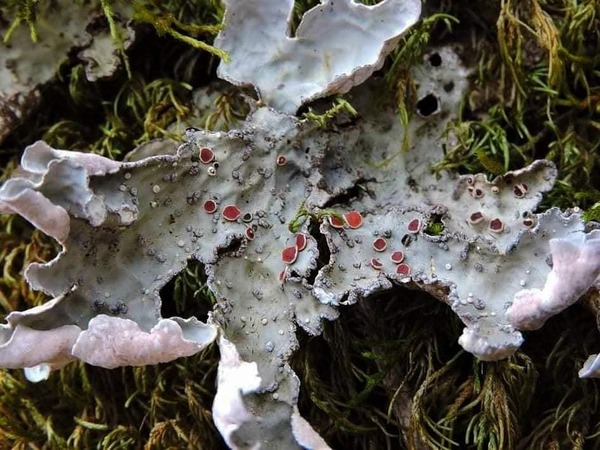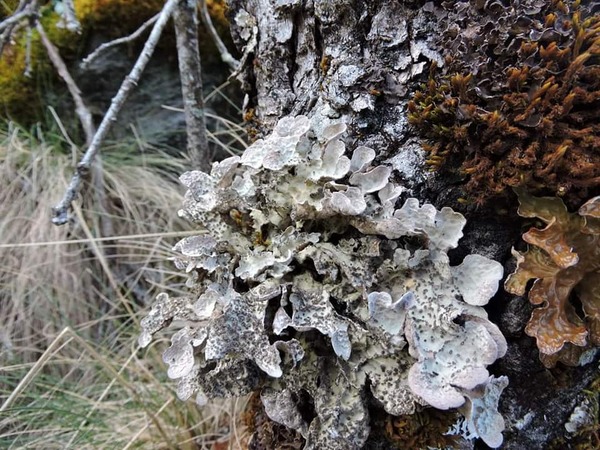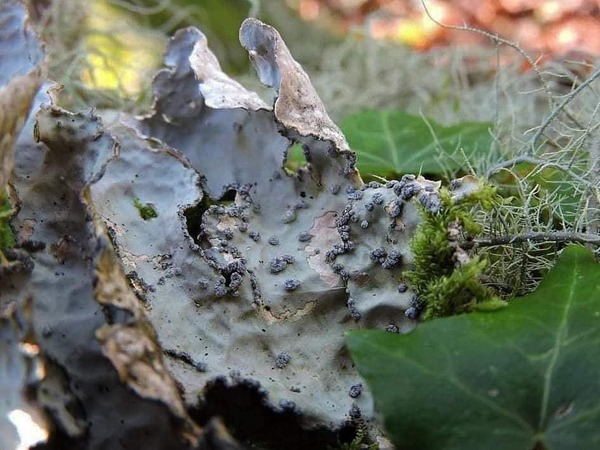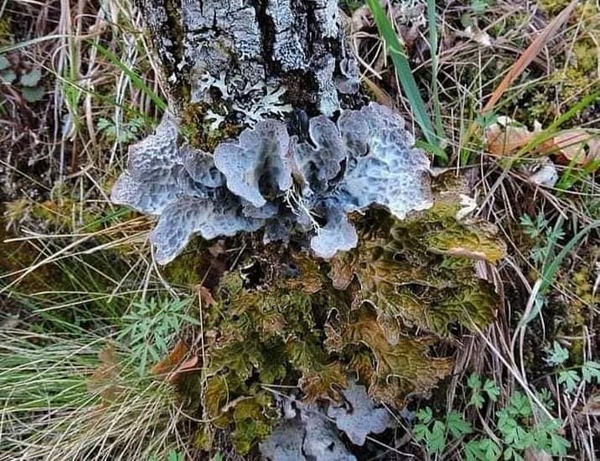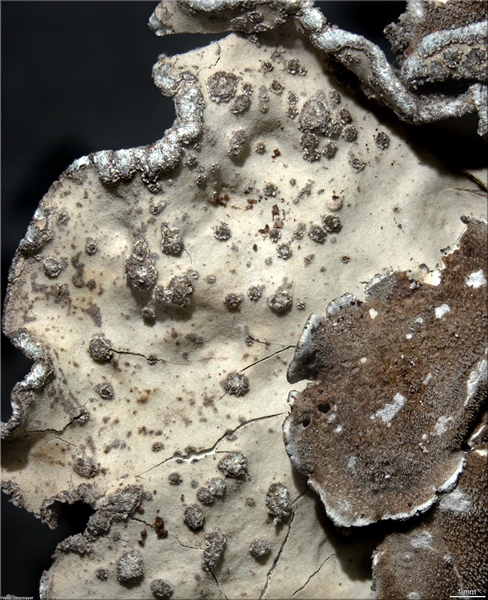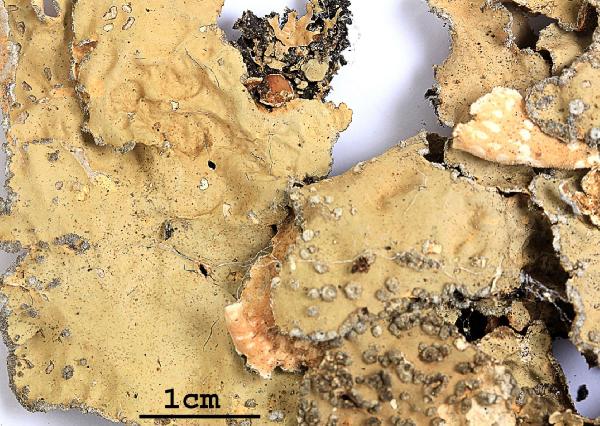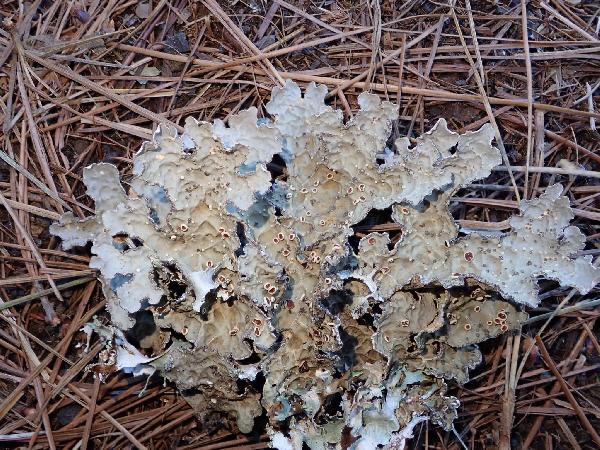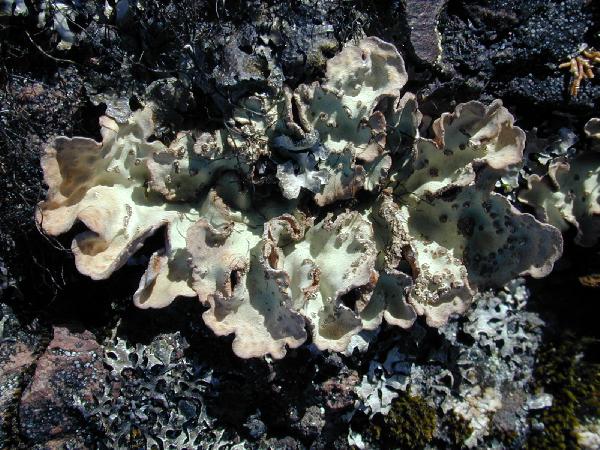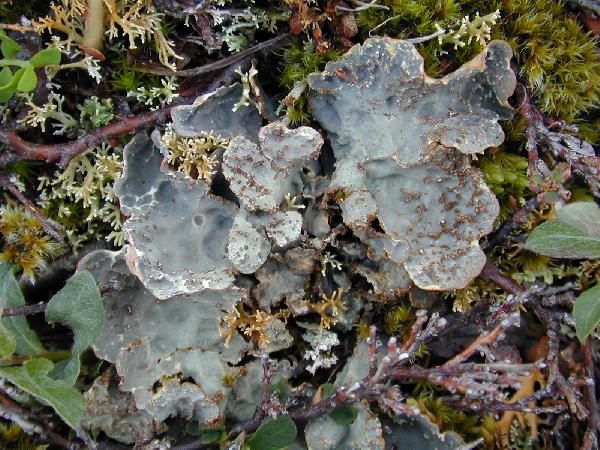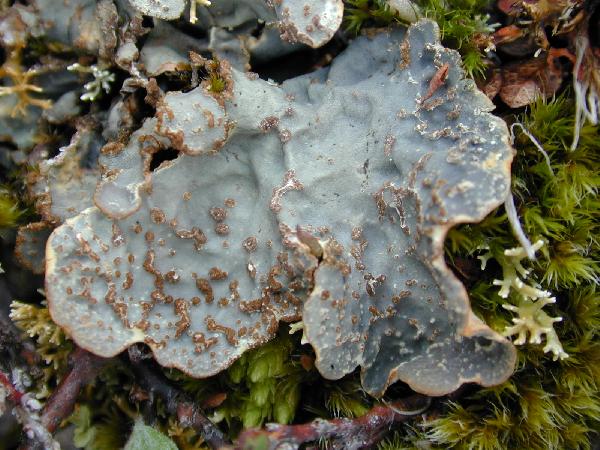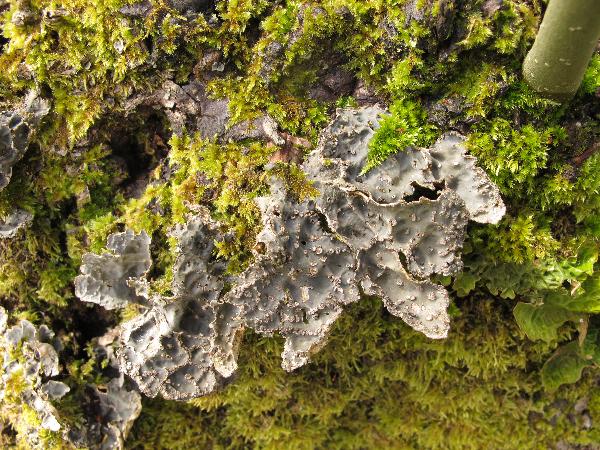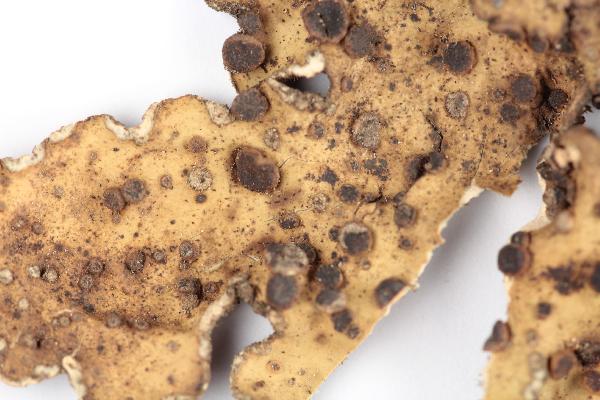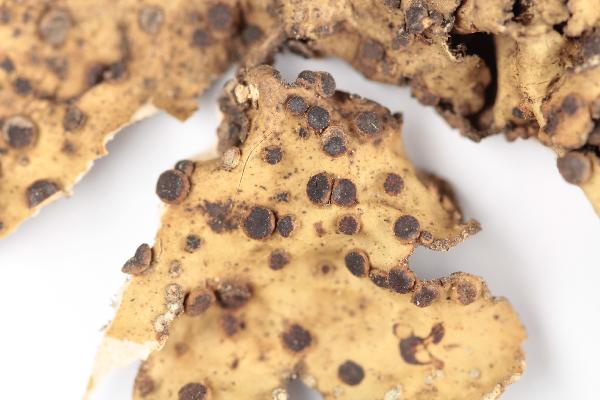Lobarina scrobiculata (Scop.) Cromb.
Nyl. ex Cromb., Monogr. Lich. Brit. 1: 270, 1894. Basionym: Lichen scrobiculatus Scop. - Fl. Carn., ed. 2, 2: 384, 1772.
Synonyms: Lobaria scrobiculata (Scop.) DC.; Lobaria verrucosa (Huds.) Hoffm.; Lobaria verrucosa f. esorediosa Gyeln.; Lobarina scrobiculata (Scop.) Nyl.; Parmelia scrobiculata (Scop.) Ach.; Sticta scrobiculata (Scop.) Ach.
Distribution: N - Frl (Tretiach 1993, 1996), Ven (Lazzarin 1997, Nascimbene 2003b, 2011, Nascimbene & al. 2005b, 2006c, 2007, 2009c, 2010b), TAA (Nascimbene & Caniglia 2000b, Nascimbene & al. 2007b, 2022, Nimis & al. 2015), Lomb (Dalle Vedove & al. 2004), Piem (Isocrono & al. 2004, Morisi 2005), VA (Piervittori & Isocrono 1999, Matteucci & al. 2013), Emil (Tretiach & al. 2008, Fariselli & al. 2020), Lig (Brunialti & al. 1999, Giordani & Brunialti 2000, Watson 2014). C - Tosc (Tretiach & Nimis 1994, Benesperi & al. 2007, Brunialti & Frati 2010, Benesperi 2011, Brackel 2015, Frati & Brunialti 2023), Marc (Nimis & Tretiach 1999), Umb (Ravera 1998, Ravera & al. 2006), Laz (Ravera 2002b), Abr (Nimis & Tretiach 1999), Mol (Caporale & al. 2008), Sar (Tretiach 1993, Zedda 1995, 2002, 2002b, Rizzi & al. 2011, Di Nuzzo & al. 2022). S - Camp (Ricciardi & al. 2000, Tretiach 1993, Nascimbene & al. 2010b, Catalano & al. 2010, 2016, Ravera & Brunialti 2013, Ravera & al. 2024a), Pugl, Bas (Fascetti & al. 2005, Potenza 2006, Puntillo & al. 2009, Potenza & Fascetti 2010, 2012, Ravera & al. 2021c), Cal (Tretiach 1993, Puntillo & Vezda 1994, Puntillo 1995, 1996, Incerti & Nimis 2006), Si (Merlo 2004).
Description: Thallus foliose, broad-lobed, heteromerous, dorsiventral, loosely attached, 10-16 cm wide, the lobes rounded at apex, contiguous to imbricate, 10-30 mm wide, with entire to slightly crenulate margins. Upper surface blue-grey to yellowish grey when dry, dark blue-grey to blue-green when wet, undulate, coarsely reticulate-areolate but without defined ridges, scabrid espèecially in marginal parts due to pyramidal, c. 0.06 mm wide granules, sorediate. Soralia blue-grey, mainly laminal, punctiform at first, but eroding with age and becoming circular; soredia granular. Lower surface with glabrous, whitish patches separated by a pale brown, silky, entangled tomentum, erhizinate or with very sparse, simple rhizines. Upper and lower cortex paraplectenchymatous, the lower cortex poorly developed; medulla white. Apothecia very rare, 1-2 mm across, with a concave, red-brown disc and a verruculose, inflexed, often sorediate thalline margin. Asci 8-spored, fissitunicate, the thickened apex with a K/I+ blue ring, Peltigera-type. Ascospores (1-)3(-7) septate, hyaline, elongate-fusiform, (40-)50-80 x (4-)6-7 µm. Photobiont cyanobacterial (Nostoc, the cells in short chains). Spot tests: cortex K- or K+ faintly yellow, C-, KC-, P-; medulla K- or K+ yellow-orange, C-, KC- or KC+ orange-red, P- or P+ orange, UV+ violet. Chemistry: chemotype 1 has usnic and stictic acids plus scrobiculin and sometimes traces of norstictic acid; chemotype 2 lacks stictic acid.Note: a mild-temperate, suboceanic species found on old deciduous trees and on mossy rocks in humid open forests; formerly more frequent, presently extinct in several parts of the country (e.g. in the whole of the Po-plain), and declining elsewhere, with optimum in old Castanea-stands. A distribution map in Italy was published by Nascimbene & al. (2016). It is included in the Italian red list of epiphytic lichens as “Near-threatened” (Nascimbene & al. 2013c).
Growth form: Foliose, broad lobed
Substrata: bark
Photobiont: cyanobacteria, filamentous (e.g. Nostoc, Scytonema)
Reproductive strategy: mainly asexual, by soredia, or soredia-like structures (e.g. blastidia)
Most common in areas with a humid-warm climate (e.g. most of Tyrrenian Italy)
Commonnes-rarity: (info)
Alpine belt: absent
Subalpine belt: absent
Oromediterranean belt: absent
Montane belt: very rare
Submediterranean belt: extremely rare
Padanian area: absent
Humid submediterranean belt: very rare
Humid mediterranean belt: absent
Dry mediterranean belt: absent
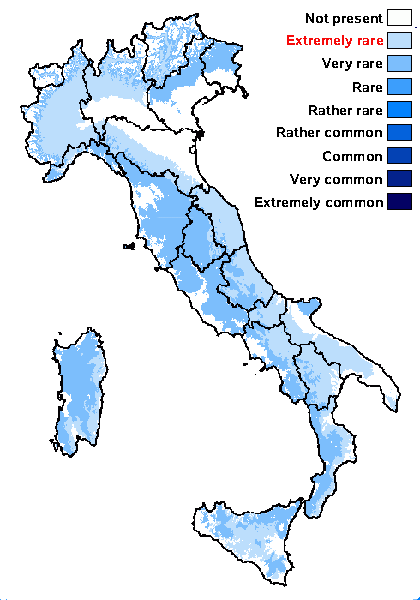
Predictive model
Herbarium samples
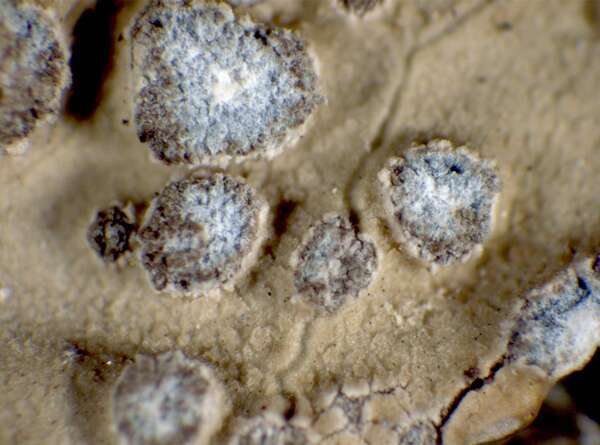

P.L. Nimis; Owner: Department of Life Sciences, University of Trieste
Herbarium: TSB (5109)
2001/11/26
detail of soredia
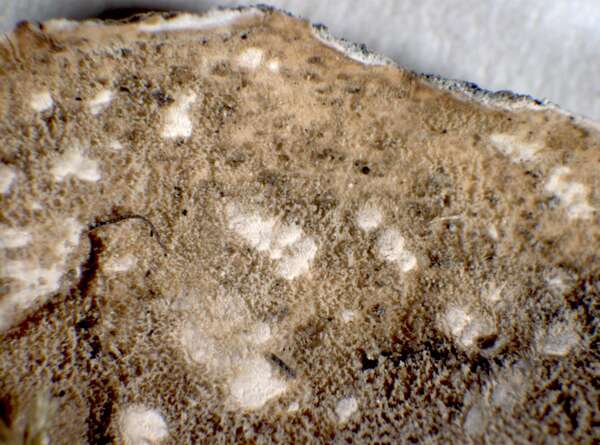

P.L. Nimis; Owner: Department of Life Sciences, University of Trieste
Herbarium: TSB (5109)
2001/11/26
detail of lower surface with tomentum
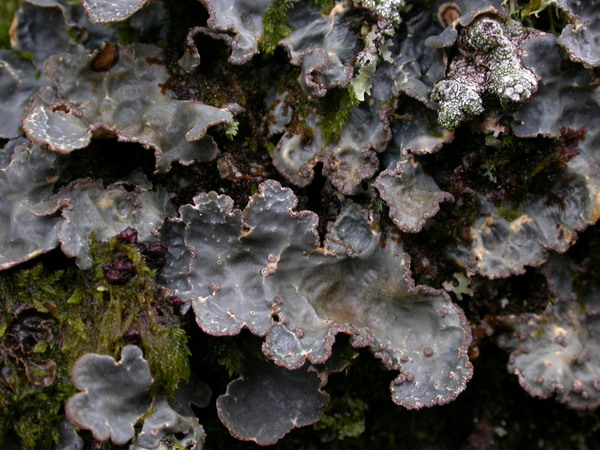

Juri Nascimbene – CC BY-SA 4.0; Owner: Department of ùLife Sciences, University of Trieste
Vinca, Prov. Massa Carrara, Tuscany, Italy
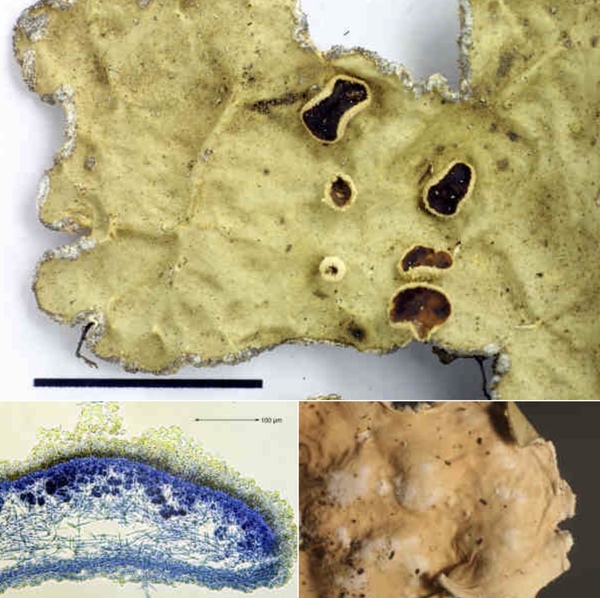

Felix Schumm – CC BY-SA 4.0
Image from: F. Schumm (2008) - Flechten Madeiras, der Kanaren und Azoren. Beck, OHG - ISBN: 978-3-00-023700-3


Felix Schumm – CC BY-SA 4.0
[19194], Norway, Eidford, 60.469° N, 7.066° E, 40 m, growing on shady deciduous tree. Leg. F. Schumm 21.06.2014.
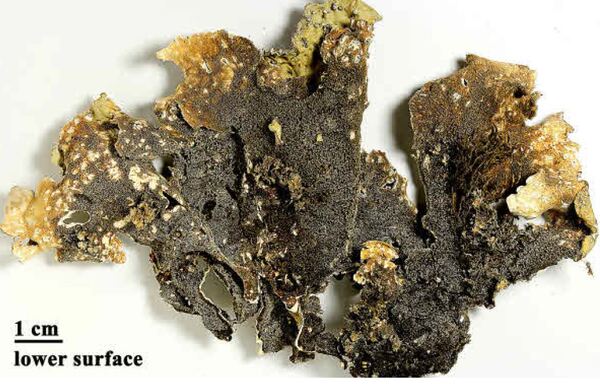

Felix Schumm – CC BY-SA 4.0
[19194], Norway, Eidford, 60.469° N, 7.066° E, 40 m, growing on shady deciduous tree. Leg. F. Schumm 21.06.2014.
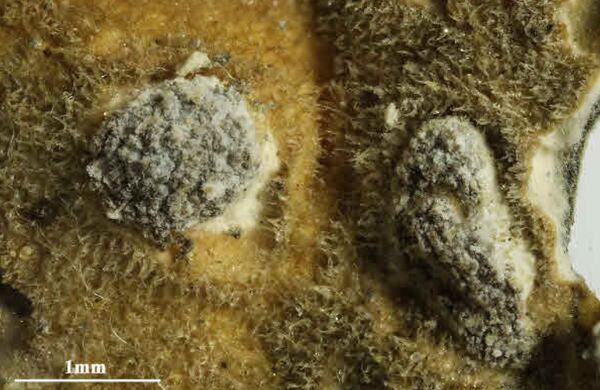

Felix Schumm – CC BY-SA 4.0
[19194], Norway, Eidford, 60.469° N, 7.066° E, 40 m, growing on shady deciduous tree. Leg. F. Schumm 21.06.2014.
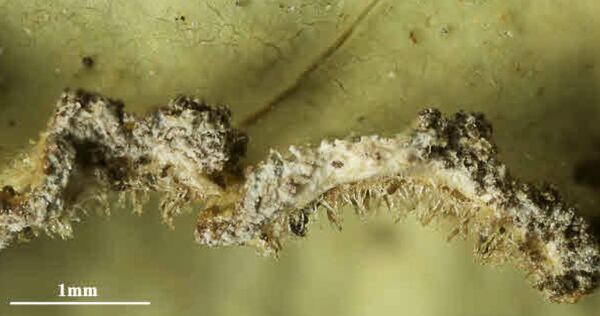

Felix Schumm – CC BY-SA 4.0
[19194], Norway, Eidford, 60.469° N, 7.066° E, 40 m, growing on shady deciduous tree. Leg. F. Schumm 21.06.2014.
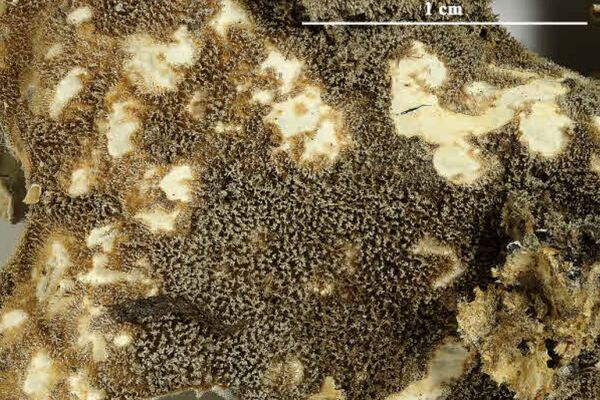

Felix Schumm – CC BY-SA 4.0
[19194], Norway, Eidford, 60.469° N, 7.066° E, 40 m, growing on shady deciduous tree. Leg. F. Schumm 21.06.2014.
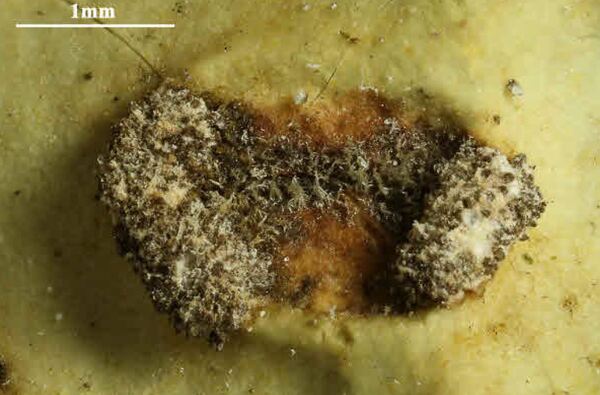

Felix Schumm – CC BY-SA 4.0
[19194], Norway, Eidford, 60.469° N, 7.066° E, 40 m, growing on shady deciduous tree. Leg. F. Schumm 21.06.2014.
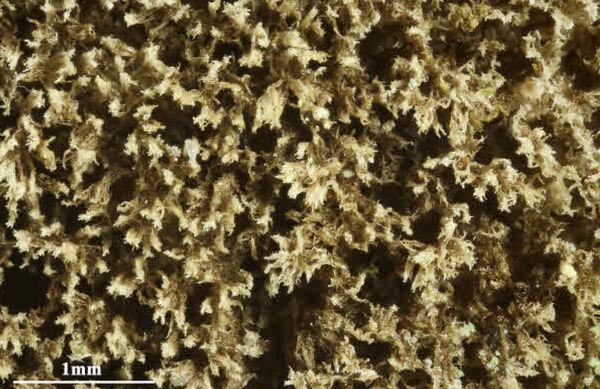

Felix Schumm – CC BY-SA 4.0
[19194], Norway, Eidford, 60.469° N, 7.066° E, 40 m, growing on shady deciduous tree. Leg. F. Schumm 21.06.2014.
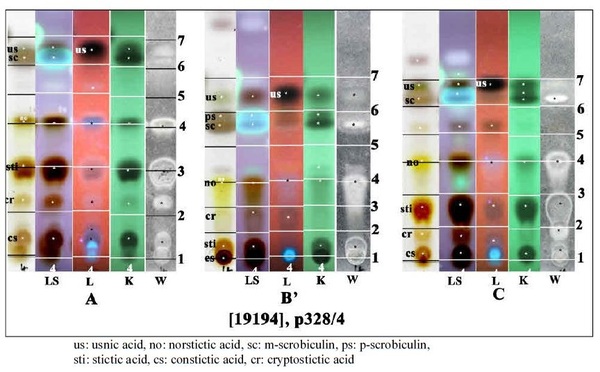

Felix Schumm – CC BY-SA 4.0
[19194], Norway, Eidford, 60.469° N, 7.066° E, 40 m, growing on shady deciduous tree. Leg. F. Schumm 21.06.2014.
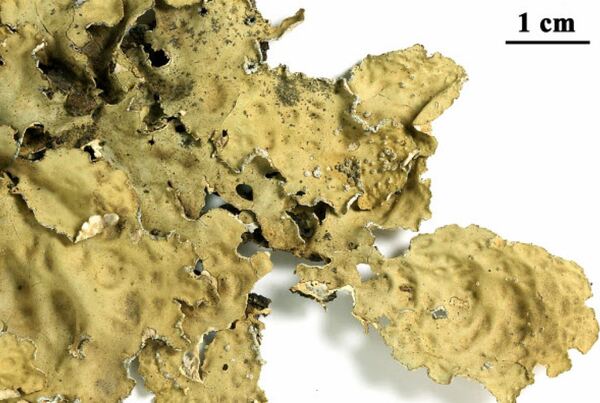

Felix Schumm – CC BY-SA 4.0
[19071], Australia, New South Wales, Great Dividing Range, Tallaganda State Forest, 10 km E of Captains Flat, 35°38' S, 149°31' E, 1240 m, on base of Eucalyptus viminalis in wet sclerophyll forest. Leg. J.A. Elix (19028) & D. Verdon, 22.03.1985. LICH. AUSTRALASICI EXS. 133.


Felix Schumm – CC BY-SA 4.0
[19071], Australia, New South Wales, Great Dividing Range, Tallaganda State Forest, 10 km E of Captains Flat, 35°38' S, 149°31' E, 1240 m, on base of Eucalyptus viminalis in wet sclerophyll forest. Leg. J.A. Elix (19028) & D. Verdon, 22.03.1985. LICH. AUSTRALASICI EXS. 133.
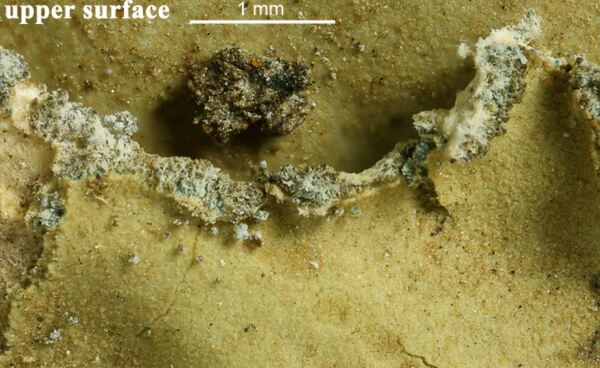

Felix Schumm – CC BY-SA 4.0
[19071], Australia, New South Wales, Great Dividing Range, Tallaganda State Forest, 10 km E of Captains Flat, 35°38' S, 149°31' E, 1240 m, on base of Eucalyptus viminalis in wet sclerophyll forest. Leg. J.A. Elix (19028) & D. Verdon, 22.03.1985. LICH. AUSTRALASICI EXS. 133.
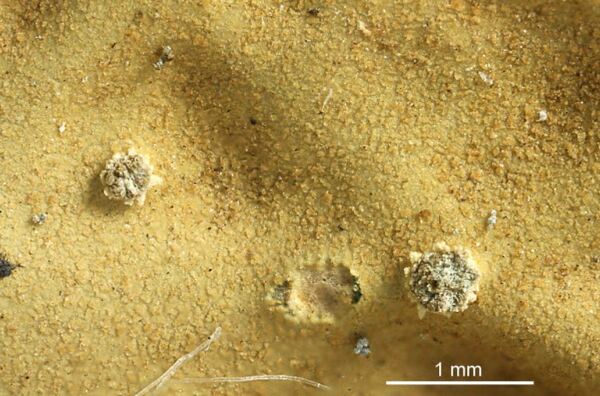

Felix Schumm – CC BY-SA 4.0
[19071], Australia, New South Wales, Great Dividing Range, Tallaganda State Forest, 10 km E of Captains Flat, 35°38' S, 149°31' E, 1240 m, on base of Eucalyptus viminalis in wet sclerophyll forest. Leg. J.A. Elix (19028) & D. Verdon, 22.03.1985. LICH. AUSTRALASICI EXS. 133.
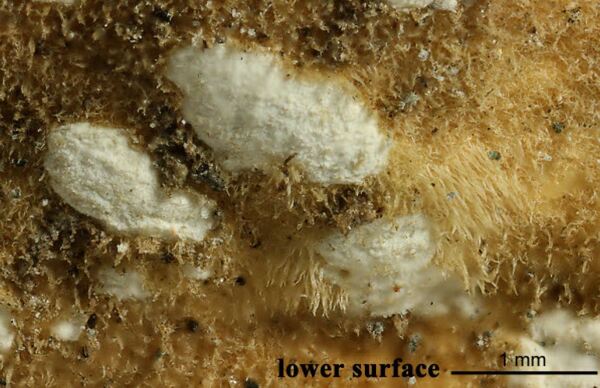

Felix Schumm – CC BY-SA 4.0
[19071], Australia, New South Wales, Great Dividing Range, Tallaganda State Forest, 10 km E of Captains Flat, 35°38' S, 149°31' E, 1240 m, on base of Eucalyptus viminalis in wet sclerophyll forest. Leg. J.A. Elix (19028) & D. Verdon, 22.03.1985. LICH. AUSTRALASICI EXS. 133.
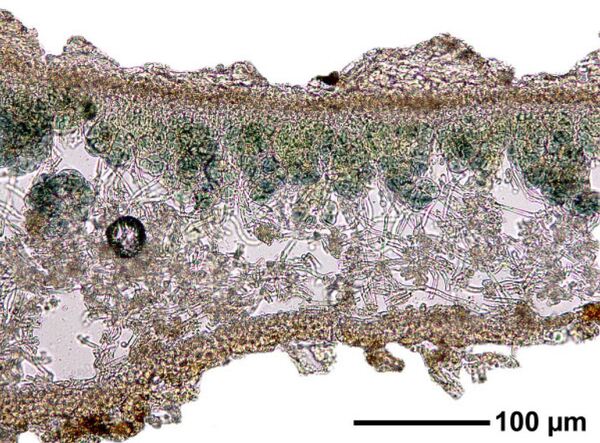

Felix Schumm – CC BY-SA 4.0
[19071], Australia, New South Wales, Great Dividing Range, Tallaganda State Forest, 10 km E of Captains Flat, 35°38' S, 149°31' E, 1240 m, on base of Eucalyptus viminalis in wet sclerophyll forest. Leg. J.A. Elix (19028) & D. Verdon, 22.03.1985. LICH. AUSTRALASICI EXS. 133.
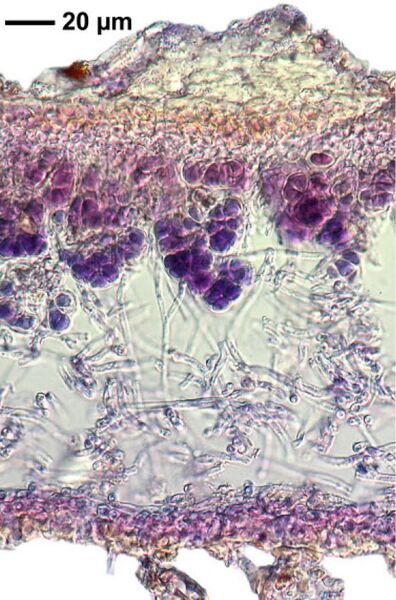

Felix Schumm – CC BY-SA 4.0
[19071], Australia, New South Wales, Great Dividing Range, Tallaganda State Forest, 10 km E of Captains Flat, 35°38' S, 149°31' E, 1240 m, on base of Eucalyptus viminalis in wet sclerophyll forest. Leg. J.A. Elix (19028) & D. Verdon, 22.03.1985. LICH. AUSTRALASICI EXS. 133.
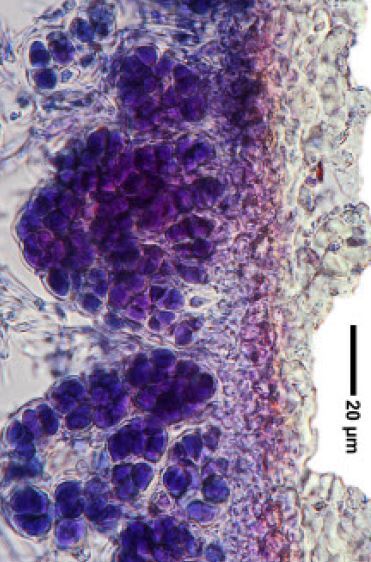

Felix Schumm – CC BY-SA 4.0
[19071], Australia, New South Wales, Great Dividing Range, Tallaganda State Forest, 10 km E of Captains Flat, 35°38' S, 149°31' E, 1240 m, on base of Eucalyptus viminalis in wet sclerophyll forest. Leg. J.A. Elix (19028) & D. Verdon, 22.03.1985. LICH. AUSTRALASICI EXS. 133.
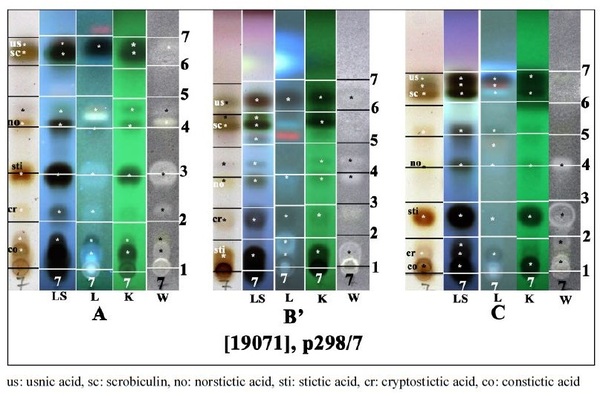

Felix Schumm – CC BY-SA 4.0
[19071], Australia, New South Wales, Great Dividing Range, Tallaganda State Forest, 10 km E of Captains Flat, 35°38' S, 149°31' E, 1240 m, on base of Eucalyptus viminalis in wet sclerophyll forest. Leg. J.A. Elix (19028) & D. Verdon, 22.03.1985. LICH. AUSTRALASICI EXS. 133.
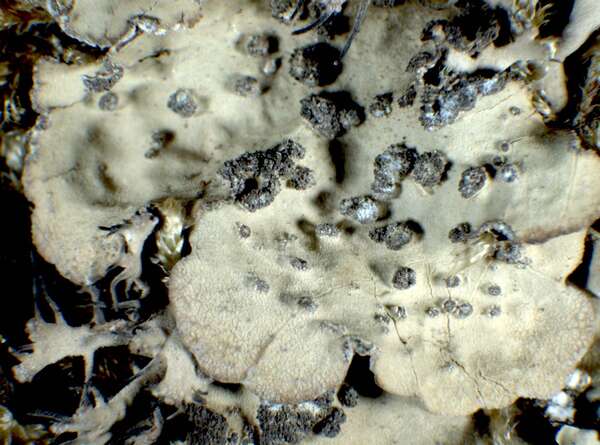

P.L. Nimis; Owner: Department of Life Sciences, University of Trieste
Herbarium: TSB (5109)
2001/11/26

Courtesy Danièle et Olivier Gonnet - Source: https://www.afl-lichenologie.fr/Photos_AFL/Photos_AFL_L/Texte_L_3/Lobarina_scrobiculata.htm
France, avril 2014 - Cucuruzzu - Corse
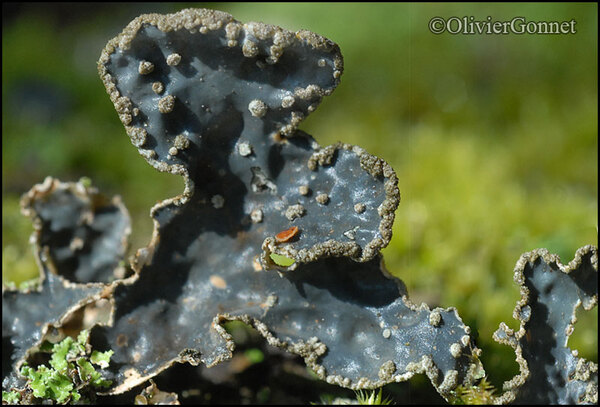
Courtesy Danièle et Olivier Gonnet - Source: https://www.afl-lichenologie.fr/Photos_AFL/Photos_AFL_L/Texte_L_3/Lobarina_scrobiculata.htm
France, avril 2014 - Cucuruzzu - Corse

Courtesy Danièle et Olivier Gonnet - Source: https://www.afl-lichenologie.fr/Photos_AFL/Photos_AFL_L/Texte_L_3/Lobarina_scrobiculata.htm
France, avril 2014 - Cucuruzzu - Corse
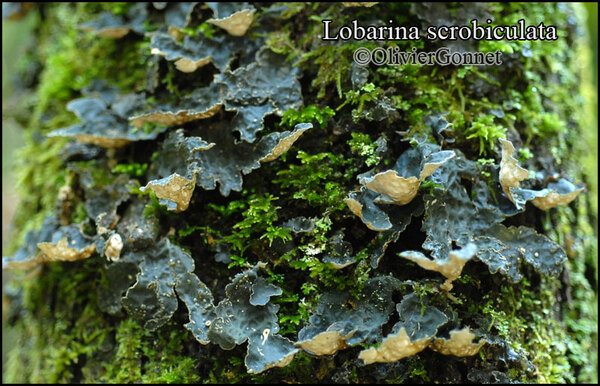
Courtesy Danièle et Olivier Gonnet - Source: https://www.afl-lichenologie.fr/Photos_AFL/Photos_AFL_L/Texte_L_3/Lobarina_scrobiculata.htm
France, avril 2014 - Cucuruzzu - Corse
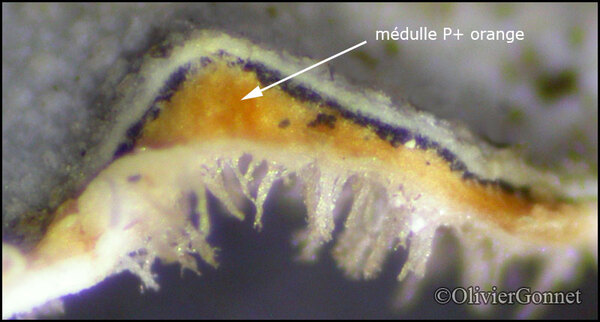
Courtesy Danièle et Olivier Gonnet - Source: https://www.afl-lichenologie.fr/Photos_AFL/Photos_AFL_L/Texte_L_3/Lobarina_scrobiculata.htm
France, avril 2014 - Cucuruzzu - Corse
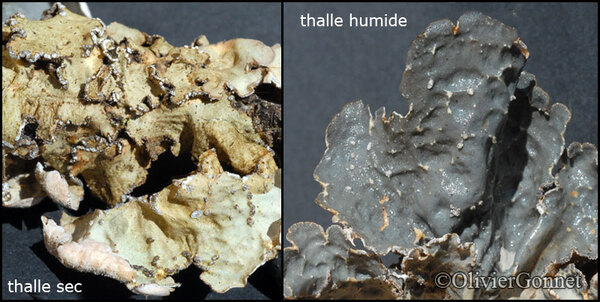
Courtesy Danièle et Olivier Gonnet - Source: https://www.afl-lichenologie.fr/Photos_AFL/Photos_AFL_L/Texte_L_3/Lobarina_scrobiculata.htm
France, avril 2014 - Cucuruzzu - Corse
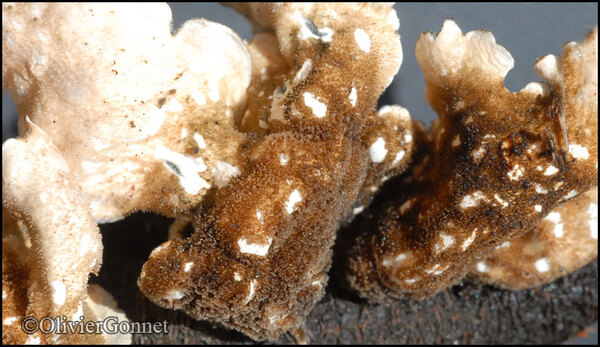
Courtesy Danièle et Olivier Gonnet - Source: https://www.afl-lichenologie.fr/Photos_AFL/Photos_AFL_L/Texte_L_3/Lobarina_scrobiculata.htm
France, avril 2014 - Cucuruzzu - Corse

Courtesy Danièle et Olivier Gonnet - Source: https://www.afl-lichenologie.fr/Photos_AFL/Photos_AFL_L/Texte_L_3/Lobarina_scrobiculata.htm
France, avril 2014 - Cucuruzzu - Corse
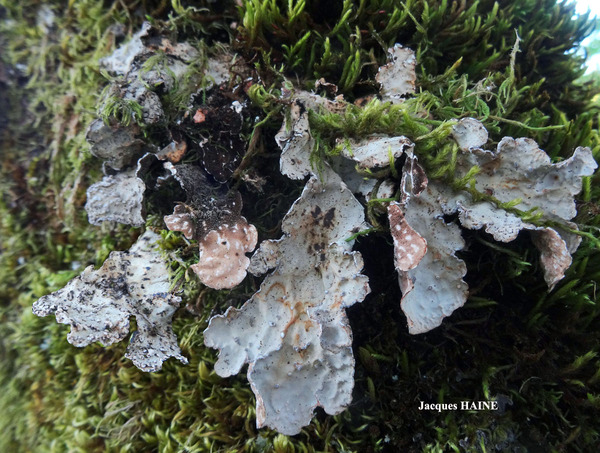
Jacques Haine - Source: http://www.lichensmaritimes.org/index.php?task=fiche&lichen=436&lang=en
France, Jura, Mont d'Or
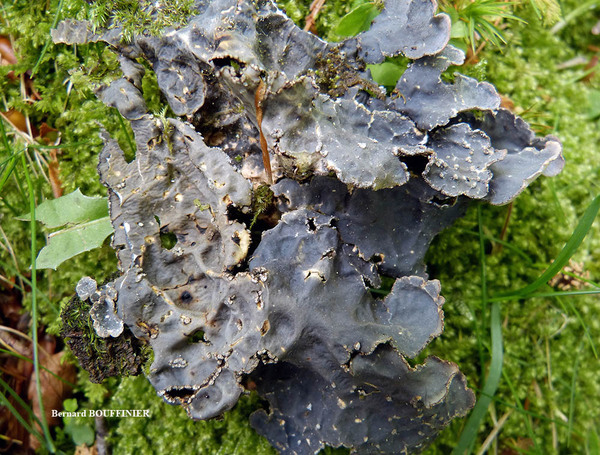
Bernard Bouffinier - Source: http://www.lichensmaritimes.org/index.php?task=fiche&lichen=436&lang=en
France, Col d'Iraty

Bernard Bouffinier - Source: http://www.lichensmaritimes.org/index.php?task=fiche&lichen=436&lang=en
France, Col d'Iraty

Bernard Bouffinier - Source: http://www.lichensmaritimes.org/index.php?task=fiche&lichen=436&lang=en
France, Stangala
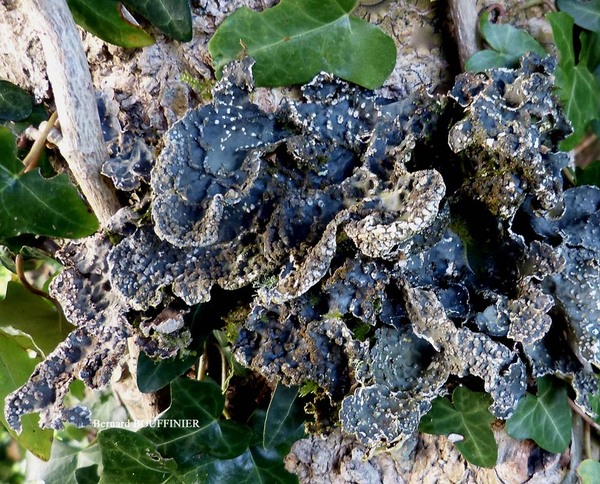
Bernard Bouffinier - Source: http://www.lichensmaritimes.org/index.php?task=fiche&lichen=436&lang=en
France, Stangala

Bernard Bouffinier - Source: http://www.lichensmaritimes.org/index.php?task=fiche&lichen=436&lang=en
France, Stangala
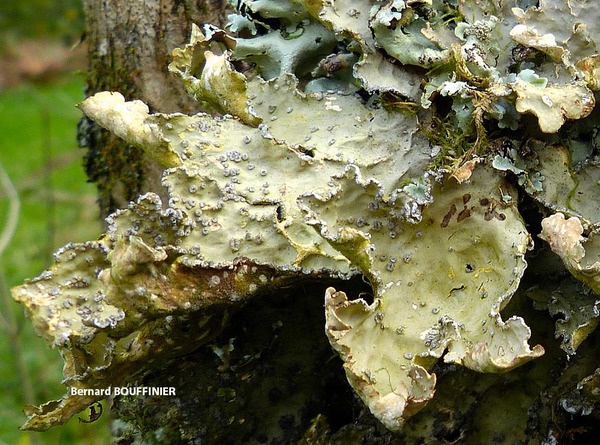
Bernard Bouffinier - Source: http://www.lichensmaritimes.org/index.php?task=fiche&lichen=436&lang=en
France, Stangala
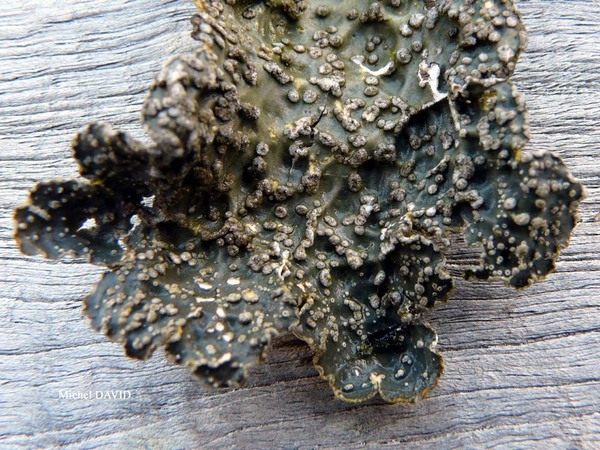
Michel David - Source: http://www.lichensmaritimes.org/index.php?task=fiche&lichen=436&lang=en
France, Stangala
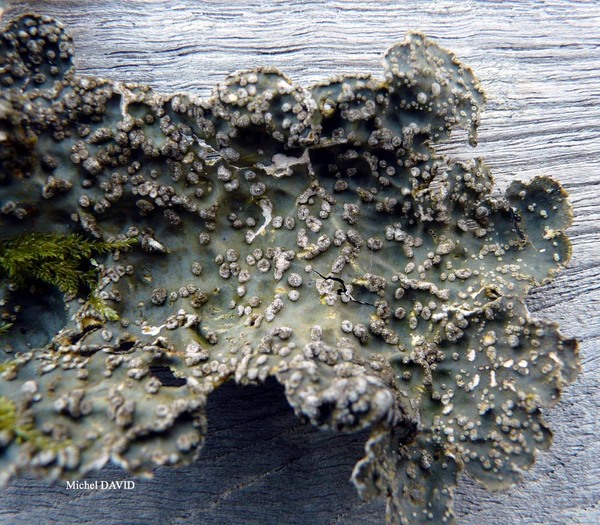
Michel David - Source: http://www.lichensmaritimes.org/index.php?task=fiche&lichen=436&lang=en
France, Stangala
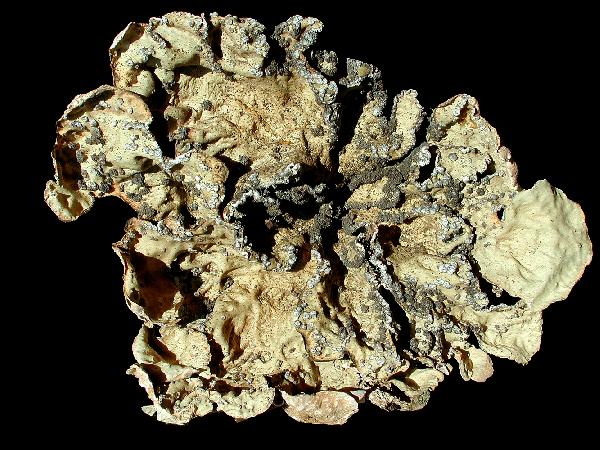
Ulrich Kirschbaum CC BY-SA 4.0 - Source: https://www.thm.de/lse/ulrich-kirschbaum/flechtenbilder
Portugal: Madeira.
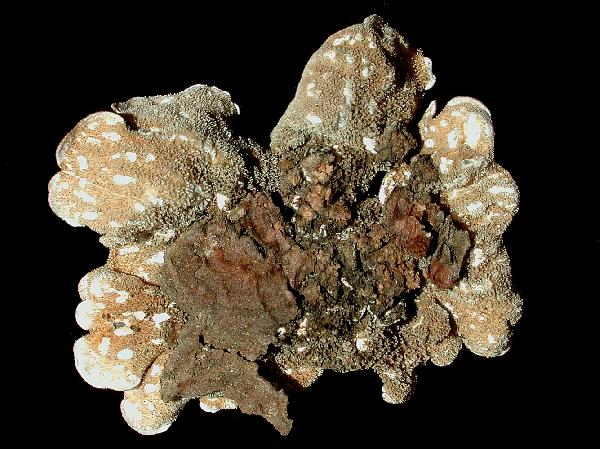
Ulrich Kirschbaum CC BY-SA 4.0 - Source: https://www.thm.de/lse/ulrich-kirschbaum/flechtenbilder
Portugal: Madeira.
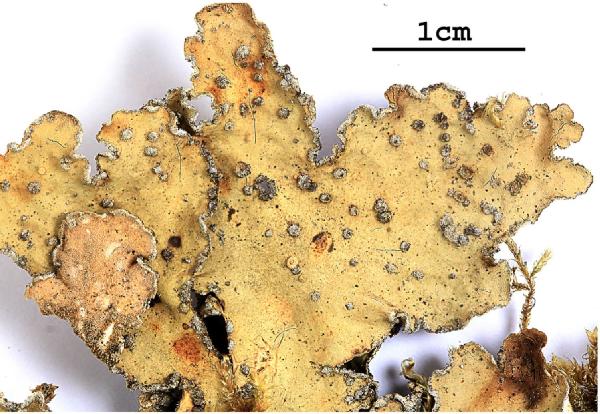

Felix Schumm - CC BY-SA 4.0
5065 - Canary Islands, Gran Canaria, road between Artenara and Pinar de Tamadaba
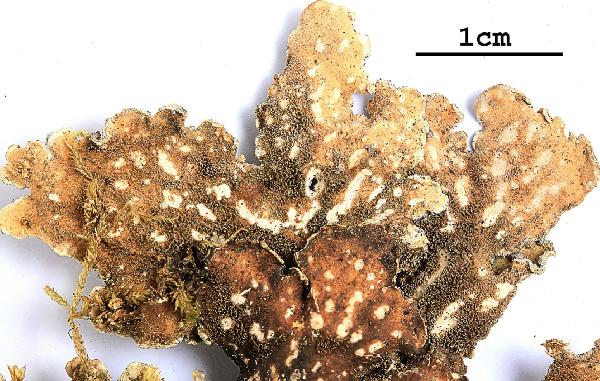

Felix Schumm - CC BY-SA 4.0
5065 - Canary Islands, Gran Canaria, road between Artenara and Pinar de Tamadaba
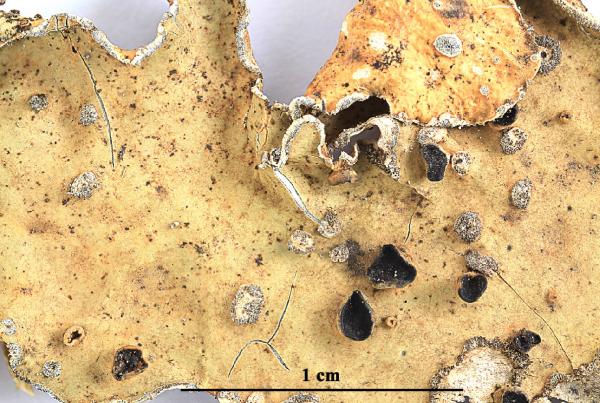

Felix Schumm - CC BY-SA 4.0
5065 - Canary Islands, Gran Canaria, road between Artenara and Pinar de Tamadaba
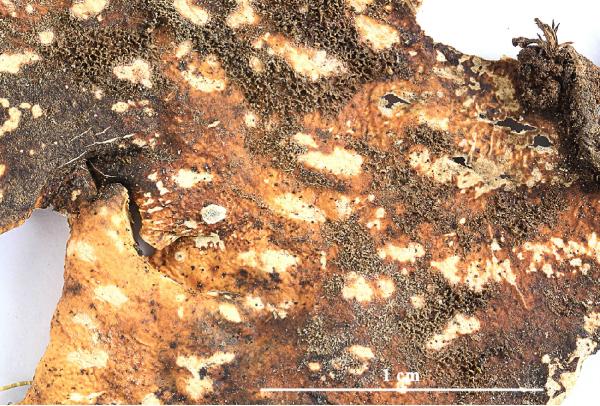

Felix Schumm - CC BY-SA 4.0
5065 - Canary Islands, Gran Canaria, road between Artenara and Pinar de Tamadaba
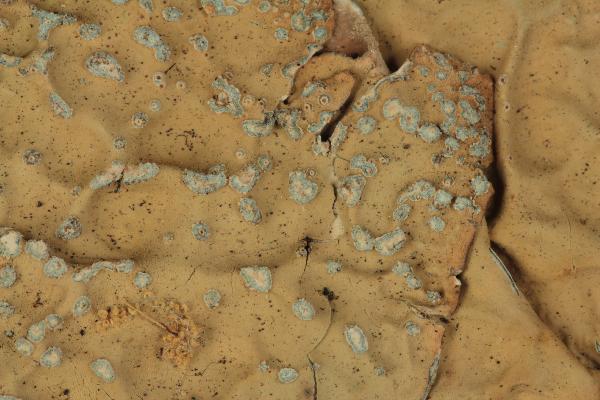
Collezione lichenologica Abramo Massalongo del Museo di Storia Naturale G. Ligabue di Venezia - Autori: Seggi, Linda; Trabucco, Raffaella Proprietà: Fondazione Musei Civici di Venezia - CC BY-NC
Italy, Veneto, in [...] nemore Cansiglio 1855
as Sticta scrobiculata
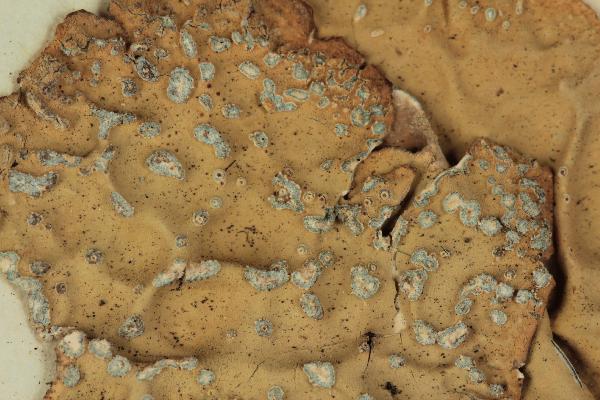
Collezione lichenologica Abramo Massalongo del Museo di Storia Naturale G. Ligabue di Venezia - Autori: Seggi, Linda; Trabucco, Raffaella Proprietà: Fondazione Musei Civici di Venezia - CC BY-NC
Italy, Veneto, in [...] nemore Cansiglio 1855
as Sticta scrobiculata
Growth form: Foliose, broad lobed
Substrata: bark
Photobiont: cyanobacteria, filamentous (e.g. Nostoc, Scytonema)
Reproductive strategy: mainly asexual, by soredia, or soredia-like structures (e.g. blastidia)
Most common in areas with a humid-warm climate (e.g. most of Tyrrenian Italy)
Commonnes-rarity: (info)
Alpine belt: absent
Subalpine belt: absent
Oromediterranean belt: absent
Montane belt: very rare
Submediterranean belt: extremely rare
Padanian area: absent
Humid submediterranean belt: very rare
Humid mediterranean belt: absent
Dry mediterranean belt: absent

Predictive model
| Herbarium samples |


P.L. Nimis; Owner: Department of Life Sciences, University of Trieste
Herbarium: TSB (5109)
2001/11/26
detail of soredia


P.L. Nimis; Owner: Department of Life Sciences, University of Trieste
Herbarium: TSB (5109)
2001/11/26
detail of lower surface with tomentum


Juri Nascimbene – CC BY-SA 4.0; Owner: Department of ùLife Sciences, University of Trieste
Vinca, Prov. Massa Carrara, Tuscany, Italy


Felix Schumm – CC BY-SA 4.0
Image from: F. Schumm (2008) - Flechten Madeiras, der Kanaren und Azoren. Beck, OHG - ISBN: 978-3-00-023700-3


Felix Schumm – CC BY-SA 4.0
[19194], Norway, Eidford, 60.469° N, 7.066° E, 40 m, growing on shady deciduous tree. Leg. F. Schumm 21.06.2014.


Felix Schumm – CC BY-SA 4.0
[19194], Norway, Eidford, 60.469° N, 7.066° E, 40 m, growing on shady deciduous tree. Leg. F. Schumm 21.06.2014.


Felix Schumm – CC BY-SA 4.0
[19194], Norway, Eidford, 60.469° N, 7.066° E, 40 m, growing on shady deciduous tree. Leg. F. Schumm 21.06.2014.


Felix Schumm – CC BY-SA 4.0
[19194], Norway, Eidford, 60.469° N, 7.066° E, 40 m, growing on shady deciduous tree. Leg. F. Schumm 21.06.2014.


Felix Schumm – CC BY-SA 4.0
[19194], Norway, Eidford, 60.469° N, 7.066° E, 40 m, growing on shady deciduous tree. Leg. F. Schumm 21.06.2014.


Felix Schumm – CC BY-SA 4.0
[19194], Norway, Eidford, 60.469° N, 7.066° E, 40 m, growing on shady deciduous tree. Leg. F. Schumm 21.06.2014.


Felix Schumm – CC BY-SA 4.0
[19194], Norway, Eidford, 60.469° N, 7.066° E, 40 m, growing on shady deciduous tree. Leg. F. Schumm 21.06.2014.


Felix Schumm – CC BY-SA 4.0
[19194], Norway, Eidford, 60.469° N, 7.066° E, 40 m, growing on shady deciduous tree. Leg. F. Schumm 21.06.2014.


Felix Schumm – CC BY-SA 4.0
[19071], Australia, New South Wales, Great Dividing Range, Tallaganda State Forest, 10 km E of Captains Flat, 35°38' S, 149°31' E, 1240 m, on base of Eucalyptus viminalis in wet sclerophyll forest. Leg. J.A. Elix (19028) & D. Verdon, 22.03.1985. LICH. AUSTRALASICI EXS. 133.


Felix Schumm – CC BY-SA 4.0
[19071], Australia, New South Wales, Great Dividing Range, Tallaganda State Forest, 10 km E of Captains Flat, 35°38' S, 149°31' E, 1240 m, on base of Eucalyptus viminalis in wet sclerophyll forest. Leg. J.A. Elix (19028) & D. Verdon, 22.03.1985. LICH. AUSTRALASICI EXS. 133.


Felix Schumm – CC BY-SA 4.0
[19071], Australia, New South Wales, Great Dividing Range, Tallaganda State Forest, 10 km E of Captains Flat, 35°38' S, 149°31' E, 1240 m, on base of Eucalyptus viminalis in wet sclerophyll forest. Leg. J.A. Elix (19028) & D. Verdon, 22.03.1985. LICH. AUSTRALASICI EXS. 133.


Felix Schumm – CC BY-SA 4.0
[19071], Australia, New South Wales, Great Dividing Range, Tallaganda State Forest, 10 km E of Captains Flat, 35°38' S, 149°31' E, 1240 m, on base of Eucalyptus viminalis in wet sclerophyll forest. Leg. J.A. Elix (19028) & D. Verdon, 22.03.1985. LICH. AUSTRALASICI EXS. 133.


Felix Schumm – CC BY-SA 4.0
[19071], Australia, New South Wales, Great Dividing Range, Tallaganda State Forest, 10 km E of Captains Flat, 35°38' S, 149°31' E, 1240 m, on base of Eucalyptus viminalis in wet sclerophyll forest. Leg. J.A. Elix (19028) & D. Verdon, 22.03.1985. LICH. AUSTRALASICI EXS. 133.


Felix Schumm – CC BY-SA 4.0
[19071], Australia, New South Wales, Great Dividing Range, Tallaganda State Forest, 10 km E of Captains Flat, 35°38' S, 149°31' E, 1240 m, on base of Eucalyptus viminalis in wet sclerophyll forest. Leg. J.A. Elix (19028) & D. Verdon, 22.03.1985. LICH. AUSTRALASICI EXS. 133.


Felix Schumm – CC BY-SA 4.0
[19071], Australia, New South Wales, Great Dividing Range, Tallaganda State Forest, 10 km E of Captains Flat, 35°38' S, 149°31' E, 1240 m, on base of Eucalyptus viminalis in wet sclerophyll forest. Leg. J.A. Elix (19028) & D. Verdon, 22.03.1985. LICH. AUSTRALASICI EXS. 133.


Felix Schumm – CC BY-SA 4.0
[19071], Australia, New South Wales, Great Dividing Range, Tallaganda State Forest, 10 km E of Captains Flat, 35°38' S, 149°31' E, 1240 m, on base of Eucalyptus viminalis in wet sclerophyll forest. Leg. J.A. Elix (19028) & D. Verdon, 22.03.1985. LICH. AUSTRALASICI EXS. 133.


Felix Schumm – CC BY-SA 4.0
[19071], Australia, New South Wales, Great Dividing Range, Tallaganda State Forest, 10 km E of Captains Flat, 35°38' S, 149°31' E, 1240 m, on base of Eucalyptus viminalis in wet sclerophyll forest. Leg. J.A. Elix (19028) & D. Verdon, 22.03.1985. LICH. AUSTRALASICI EXS. 133.


P.L. Nimis; Owner: Department of Life Sciences, University of Trieste
Herbarium: TSB (5109)
2001/11/26

Courtesy Danièle et Olivier Gonnet - Source: https://www.afl-lichenologie.fr/Photos_AFL/Photos_AFL_L/Texte_L_3/Lobarina_scrobiculata.htm
France, avril 2014 - Cucuruzzu - Corse

Courtesy Danièle et Olivier Gonnet - Source: https://www.afl-lichenologie.fr/Photos_AFL/Photos_AFL_L/Texte_L_3/Lobarina_scrobiculata.htm
France, avril 2014 - Cucuruzzu - Corse

Courtesy Danièle et Olivier Gonnet - Source: https://www.afl-lichenologie.fr/Photos_AFL/Photos_AFL_L/Texte_L_3/Lobarina_scrobiculata.htm
France, avril 2014 - Cucuruzzu - Corse

Courtesy Danièle et Olivier Gonnet - Source: https://www.afl-lichenologie.fr/Photos_AFL/Photos_AFL_L/Texte_L_3/Lobarina_scrobiculata.htm
France, avril 2014 - Cucuruzzu - Corse

Courtesy Danièle et Olivier Gonnet - Source: https://www.afl-lichenologie.fr/Photos_AFL/Photos_AFL_L/Texte_L_3/Lobarina_scrobiculata.htm
France, avril 2014 - Cucuruzzu - Corse

Courtesy Danièle et Olivier Gonnet - Source: https://www.afl-lichenologie.fr/Photos_AFL/Photos_AFL_L/Texte_L_3/Lobarina_scrobiculata.htm
France, avril 2014 - Cucuruzzu - Corse

Courtesy Danièle et Olivier Gonnet - Source: https://www.afl-lichenologie.fr/Photos_AFL/Photos_AFL_L/Texte_L_3/Lobarina_scrobiculata.htm
France, avril 2014 - Cucuruzzu - Corse

Courtesy Danièle et Olivier Gonnet - Source: https://www.afl-lichenologie.fr/Photos_AFL/Photos_AFL_L/Texte_L_3/Lobarina_scrobiculata.htm
France, avril 2014 - Cucuruzzu - Corse

Jacques Haine - Source: http://www.lichensmaritimes.org/index.php?task=fiche&lichen=436&lang=en
France, Jura, Mont d'Or

Bernard Bouffinier - Source: http://www.lichensmaritimes.org/index.php?task=fiche&lichen=436&lang=en
France, Col d'Iraty

Bernard Bouffinier - Source: http://www.lichensmaritimes.org/index.php?task=fiche&lichen=436&lang=en
France, Col d'Iraty

Bernard Bouffinier - Source: http://www.lichensmaritimes.org/index.php?task=fiche&lichen=436&lang=en
France, Stangala

Bernard Bouffinier - Source: http://www.lichensmaritimes.org/index.php?task=fiche&lichen=436&lang=en
France, Stangala

Bernard Bouffinier - Source: http://www.lichensmaritimes.org/index.php?task=fiche&lichen=436&lang=en
France, Stangala

Bernard Bouffinier - Source: http://www.lichensmaritimes.org/index.php?task=fiche&lichen=436&lang=en
France, Stangala

Michel David - Source: http://www.lichensmaritimes.org/index.php?task=fiche&lichen=436&lang=en
France, Stangala

Michel David - Source: http://www.lichensmaritimes.org/index.php?task=fiche&lichen=436&lang=en
France, Stangala

Ulrich Kirschbaum CC BY-SA 4.0 - Source: https://www.thm.de/lse/ulrich-kirschbaum/flechtenbilder
Portugal: Madeira.

Ulrich Kirschbaum CC BY-SA 4.0 - Source: https://www.thm.de/lse/ulrich-kirschbaum/flechtenbilder
Portugal: Madeira.


Felix Schumm - CC BY-SA 4.0
5065 - Canary Islands, Gran Canaria, road between Artenara and Pinar de Tamadaba


Felix Schumm - CC BY-SA 4.0
5065 - Canary Islands, Gran Canaria, road between Artenara and Pinar de Tamadaba


Felix Schumm - CC BY-SA 4.0
5065 - Canary Islands, Gran Canaria, road between Artenara and Pinar de Tamadaba


Felix Schumm - CC BY-SA 4.0
5065 - Canary Islands, Gran Canaria, road between Artenara and Pinar de Tamadaba

Collezione lichenologica Abramo Massalongo del Museo di Storia Naturale G. Ligabue di Venezia - Autori: Seggi, Linda; Trabucco, Raffaella Proprietà: Fondazione Musei Civici di Venezia - CC BY-NC
Italy, Veneto, in [...] nemore Cansiglio 1855
as Sticta scrobiculata

 INDEX FUNGORUM
INDEX FUNGORUM
 GBIF
GBIF
 DOLICHENS
DOLICHENS
